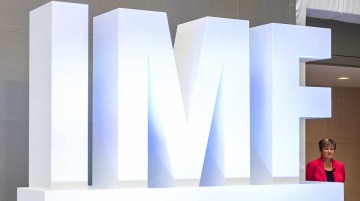
By Cecilia Springer
The Global South faces major financing gaps for achieving sustainable development goals. At the same time, the main infrastructure initiatives seeking to fill these gaps – China’s Belt and Road Initiative (BRI) and the US-led Partnership for Global Infrastructure Investment (PGII) – are increasingly framed as strategic counters to each other.
The BRI has been a major source of lending and development finance in developing countries, but concerns have been raised about the environmental and social impacts of these projects, a lack of integration with local institutions and challenges with timely project completion.
Concomitantly, to address the financing gap, development finance institutions have identified cofinancing, the practice of multiple institutions pooling their financial resources to jointly finance a project or program, as a key tool to mobilize financial resources from government agencies, development banks and the private sector. But to date, there has been limited evidence on how exactly cofinancing can impact project outcomes – for better or worse.
Now, new research by the Boston University Global Development Policy Center provides early evidence of the positive impacts of cofinancing, finding it can improve infrastructure project outcomes and reduce environmental impacts.
After examining nearly 3,000 infrastructure projects funded by Chinese lending and development finance, of which 15 percent are cofinanced with international organizations, recipient countries and other stakeholders, we found that cofinanced projects are less likely to be cancelled or suspended than non-cofinanced projects. In addition, projects cofinanced with partners from the recipient country are associated with more localized implementation, which can foster local capacity.
In addition, when China cofinances with international partners, projects are associated with better environmental performance on multiple fronts, namely lower potential climate impact and lower biodiversity risk. In the power sector, cofinanced plants appear to use cleaner sources of fuel, driving lower emissions intensity. Indeed, as Chinese financial institutions are relative newcomers in providing infrastructure finance in the Global South, China can learn through cofinancing with international partners who may adhere to or have experience with achieving higher environmental standards.
In an era where geopolitical tensions have become obstacles to financing development in the Global South, positive examples of international cooperation seem hard to come by. Yet, the evidence shows that a collaborative approach to development finance reaps more benefits than going it alone, making the case for cofinancing even more compelling.
*
Cecilia Springer is the Assistant Director of the Global China Initiative at the Boston University Global Development Policy and an expert in China’s overseas energy and development finance. Follow her on Twitter: @Han_Cecilia.







